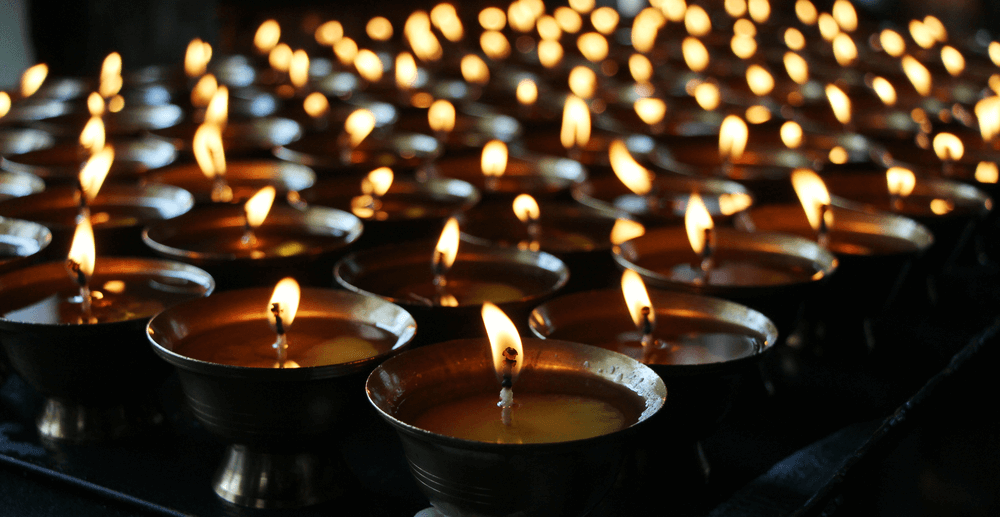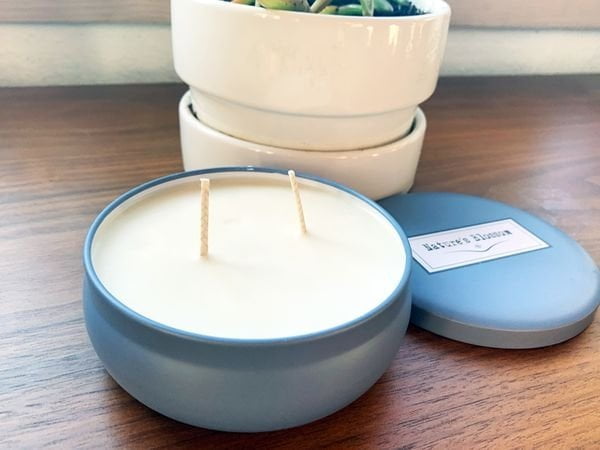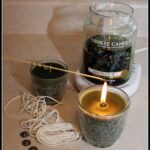
I was checking your site for a good outdoor/citronella candle but couldn’t find one… do you make citronella candles?
While Susquehanna Candle does not promote their candles as citronella, their formula makeup is coincidently constructed in such a way that repels most summer time bugs and pests including mosquitoes and black flies.
So next time you have a summer party – set out a few of our lit triple-wick candles and be pleasantly surprised by the results. Another tid bit about our candles is that, unlike many of our competitors, including the nation’s leading candle company, Susquehanna Candles have an extremely high melting point. This means that they will not deform or melt all over the back seat of your car on a hot summer day, nor will they arrive at your doorstep, after shipment, in any other way than perfect condition – wicks remaining straight and wax blemish-free.
I’m afraid of lighting candles in my house because I have young kids – what would you recommend as an alternative?
There is no need for an alternative. Many of our candles can scent a small room without even being lit. Also, our candles are made up of 100% Cotton Wicks and the wax is of the highest quality and food grade; that means we use the same wax in our candles as do chocolate and candy bakers. Therefore, you needn’t worry about children who seem to put any thing and everything into their mouths – our candles are completely safe and non-toxic for both kids and curious pets.
I keep hearing about Soy Candles and how they are supposed to be the most environmentally friendly… do you sell soy candles?
Yes, Soy Candles do seem to be the latest trend. While Susquehanna Candle has honored requests to manufacture soy candles for a few high-end cosmetic companies, we do not make any under our own brand and recommend steering clear of them for a variety of reasons. Our research has found that soy candles have a limited shelf life, poor fragrance quality, low melting points, heavy material expense and inaccurate impression of being “the highest quality candle.”
Soy candles seem to have a minimal shelf life, many becoming rancid within only six months after production. To counteract this, many companies that boast “Soy Candles” only use 1-10% soy in their wax in an attempt to lengthen the candle life. They often substitute other less expensive and “dirtier” waxes for the remainder of the candle – therefore creating a candle that carries the name “soy” but not much else. At Susquehanna Candle, we use only the best quality, food-grade, paraffin wax. This ensures a cleaner burn that is completely environmentally (and kid) safe. The formula and composition of Susquehanna Candles is unique to our company.
In general, soy candles do provide a cleaner burn and smoother surface than most other wax types. Susquehanna Candle has created their wax formula in such a fashion that we will put our candles up against soy candles any day. We guarantee they will burn just as well (if not better), and their surface will be as smooth, as cosmetically perfect (if not better), than soy candles.
Finally most soy candles that are on the market are unscented, or in only a limited number of fragrances. This is because the wax, itself, is not made to hold fragrance oils. When the oils are added – the natural “fatty” scent of soy combines with that of the fragrance oil to distort and curdle the intended scent.
Soy candles also are created with a very low melting point. This means, if you purchase them, we recommend not leaving them in your car on a hot summer day – when you return there will be nothing but wax in your backseat. Nor do we recommend ordering them during the summer – you will face a very similar problem. Susquehanna Candles are formulated to withstand high temperatures – up to 160 degrees – without disfigurement or melting.
After the candle is done burning, some of the wax has melted down, but much of the wax is missing. Where does the missing wax go? Does it turn into airborne particles only to be inhaled by my lungs? This has puzzled me, so I was hoping you could help me out.
This is what happens when you burn a candle, the wax oxidizes in the flame to yield water and carbon dioxide, which dissipate in the air around the candle, in a reaction which also yields light and heat. Paraffin wax is composed of chains of connected carbon atoms surrounded by hydrogen atoms. These hydrocarbon molecules can burn completely. First the heat of the flame vaporizes the wax molecules and then they react with the oxygen in the air. As long as the wax doesn’t melt away from the flame, the flame will consume it completely and leave no ash or wax residue.
This is not harmful. However, do check to make sure the candles you purchase contain wicks that are 100% Cotton. Many imports contain lead wicks – which can cause severe health problems.
When purchasing a candle how does one know if a candle is scented throughout or simply scented on the surface?
Unfortunately there is no clear way to tell whether the candle is scented throughout or not, unless it says directly on the package. However, through my experience, I have found the cheaper candles (primarily those coming from china) seem to only have fragranced coatings on them – with chunks of unscented wax in the middle. Fragrance oil is one of the most expensive ingredients in candle manufacturing. I recommend simply using your common sense: if you see a 22 oz candle for $5 – more than likely you will not receive the same fragrance at the beginning as at the end.
Someone once asked me about an expression they’d read but didn’t quite understand. The expression referred to a game being worth its candle. Can you provide any help?
The more usual form of this expression is not worth the candle. It dates from medieval times, when any night-time activity had to be lit by candles, which were expensive. So some activity that wasn’t worth the candle wasn’t worth the cost of supplying the light to see it by. It’s only now, when the obvious link between the situation and the expression has been lost as a result of changing technology, that people can use forms like not worth its candle, subtly shifting the sense and making it harder to understand.
Incidentally, candles played such a large part in life in the centuries before whale oil lamps, gas and electricity successively appeared that several expressions are connected with them, such as can’t hold a candle to him, meaning that a person isn’t fit even to hold the candle for somebody else to work. Another is burn the candle at both ends, to be spendthrift, to expend one’s effort too lavishly, or try to do too much at once.
In my dog’s excitement at welcoming a dinner guest into my home, his tail knocked over one of my candles and ended up spilling the wax onto my carpeted floor. How do I get the wax out?
You can remove melted candle wax from a carpet or even a piece of furniture with a brown paper bag and an iron. Just place a piece of brown paper (folded) over the melted wax area and place a hot iron, on a low setting, on top of the newspaper for 5 to 10 seconds, lift up iron and paper. The wax should have soaked up into the paper and removed it from the carpet. This might need to be repeated a few times.
I have melted votive candle wax all over the bottom of my favorite holder. How do I get it out?
To get any of our melted votive wax out of holders, simply place the holder in the refrigerator for an hour and wax will “pop” out. How does this happen, you ask? Well, wax, like many other solids, shrinks when the temperature is lowered, thereby releasing itself naturally from its container. Buyer beware: while this technique is guaranteed to work on any Susquehanna Candle, it may not work on other candle brands’ votives.

Welcome to my candle making blog! In this blog, I will be sharing my tips and tricks for making candles. I will also be sharing some of my favorite recipes.




